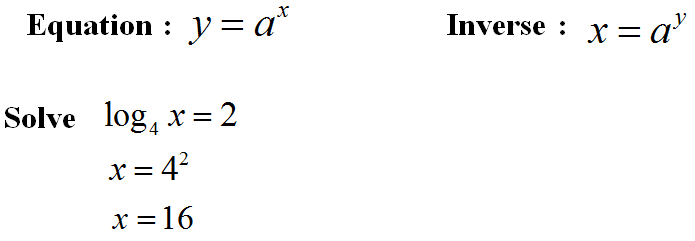

Common logs are done with base ten, but some logs ('natural' logs) are done with the constant 'e' (2.718 281 828) as their base. its natural logarithm though (partly due to left to right parenthesized exponentiation) is only 7 digits before the decimal point. From the output, we can see that the client requests repodata.json from channel list and do some computation locally in the Solving Environment Step.
#Solving logs update
For example, type conda update -debug numpy. To switch the base and argument, use the following rule. Logarithms, or 'logs', are a way of expressing one number in terms of a 'base' number that is raised to some power. 54 You can add -debug option to the conda command and see the output from console (or terminal). It is also possible to change the base of the logarithm using the following rule. If there is an exponent in the argument of a logarithm, the exponent can be pulled out of the logarithm and multiplied. When the argument of a logarithm is a fraction, the logarithm can be re-written as the subtraction of the logarithm of the numerator minus the logarithm of the denominator.ĮX: log(10 / 2) = log(10) - log(2) = 1 - 0.301 = 0.699 Solution: Using the product rule: log 2 (x(x-3)) 2. When the argument of a logarithm is the product of two numerals, the logarithm can be re-written as the addition of the logarithm of each of the numerals.ĮX: log(1 × 10) = log(1) + log(10) = 0 + 1 = 1 Log z ln(r) + i(+2n) ln((x 2 +y 2)) + i·arctan(y/x)) Logarithm problems and answers Problem 1. Base 10 is commonly used in science and engineering, base e in math and physics, and base 2 in computer science. One way to solve exponential equations, is to write both sides of the equation with the same base. X = b y then y = log bx where b is the baseĮach of the mentioned bases is typically used in different applications. Solving Using Logs and Exponents (Day 1).

log 2, the binary logarithm, is another base that is typically used with logarithms. When the base is e, ln is usually written, rather than log e. Conventionally, log implies that base 10 is being used, though the base can technically be anything. This means that the log of a number is the number that a fixed base has to be raised to in order to yield the number. Writing m log 10 a and c b log 10 a, the equation becomes y mx + c which represents a straight line with gradient m and y. In senior mathematics, competency in manipulating indices is essential, since they are used extensively in both differential and integral calculus. The logarithm, or log, is the inverse of the mathematical operation of exponentiation. Logarithms can be used to solve equations such as 2 x 3, for x. For applications that require large numbers (such as RSA encryption), this is very important.Related Scientific Calculator | Exponent Calculator

Note that this is much easier than multiplying the numbers and comparing them directly. Log x ( a ) = log y ( a ) log y ( x ) = 1 log a ( x ) \log_x(a) = \frac 7 6 4 has 55 55 5 5 digits. Step 3: Exponentiate to cancel the log (run the hook). Step 2: Use the log rules to contract to one log x log 2 3 x - 2. Log x ( a ) − log x ( b ) = log x ( a b ) \log_x(a) - \log_x(b) = \log_x\big(\frac ab\big) lo g x ( a ) − lo g x ( b ) = lo g x ( b a )Ī log x ( b ) = log x ( b a ) a\log_x(b) = \log_x(b^a) a lo g x ( b ) = lo g x ( b a ) We use the following step by step procedure: Step 1: bring all the logs on the same side of the equation and everything else on the other side. Log x ( a ) + log x ( b ) = log x ( a b ) \log_x(a) + \log_x(b) = \log_x(ab) lo g x ( a ) + lo g x ( b ) = lo g x ( a b ) Equations involving logarithms and unknown variables can often be solved by employing the definition of the logarithm, as well as several of its basic properties:


 0 kommentar(er)
0 kommentar(er)
